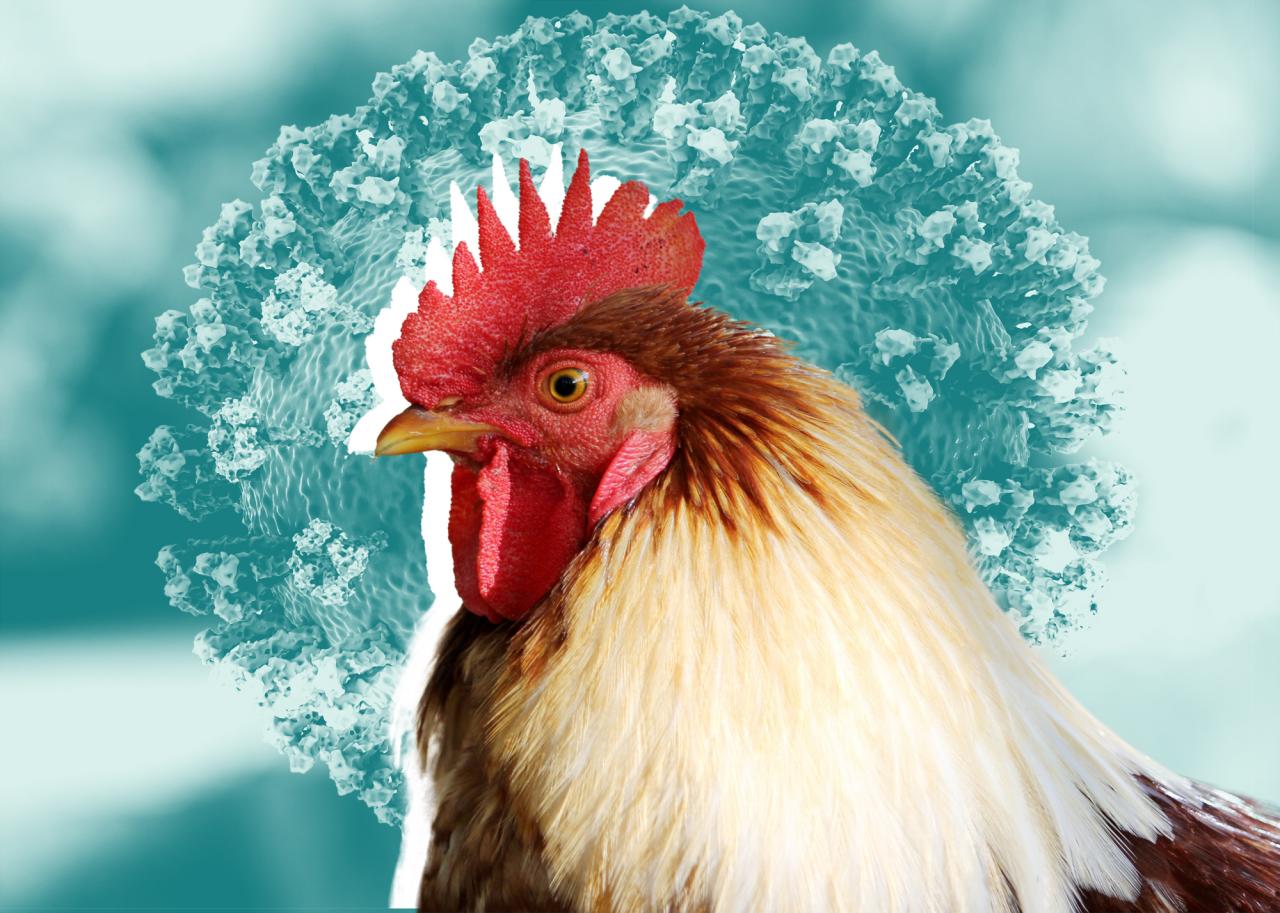
Bird flu milk, a concerning topic in the realm of public health, raises questions about the transmission, effects, and prevention of avian influenza in the dairy industry. This article delves into the intricacies of this issue, exploring its implications for milk production, human health, and the economy.
Bird flu, a highly contagious viral infection, can spread through poultry and other birds, potentially contaminating milk from infected animals. Understanding the risks associated with consuming such milk is crucial for safeguarding public health.
Transmission of Bird Flu Through Milk

Bird flu, also known as avian influenza, can be transmitted to humans through contact with infected birds or their bodily fluids. One potential route of transmission is through the consumption of milk from infected birds.
Studies have shown that bird flu viruses can be present in the milk of infected birds, and consuming this milk can pose a risk of infection to humans. The virus can enter the milk through the mammary glands of infected birds, contaminating the milk with viral particles.
The prevalence of bird flu in milk varies depending on the region and the extent of bird flu outbreaks. In areas where bird flu is common, the risk of finding contaminated milk is higher.
Consuming milk from infected birds can lead to a range of symptoms in humans, including fever, cough, sore throat, muscle aches, and fatigue. In severe cases, bird flu can lead to pneumonia, respiratory failure, and even death.
Effects of Bird Flu on Milk Production
Bird flu outbreaks can have a significant impact on milk production. Infected birds may experience reduced appetite, weight loss, and decreased milk production.
The quality of milk produced by infected birds may also be affected. Bird flu viruses can damage the mammary glands, leading to changes in the composition and nutritional value of the milk.
For example, a study conducted during a bird flu outbreak in China found that the milk from infected cows had lower levels of protein, fat, and lactose compared to milk from uninfected cows.
Bird flu outbreaks can also lead to disruptions in milk production due to quarantine measures and restrictions on the movement of animals. This can result in shortages of milk and increased prices for consumers.
Prevention and Control Measures
Several measures can be taken to prevent bird flu transmission through milk and reduce the risk of infection to humans.
- Vaccination:Vaccinating poultry against bird flu is an effective way to prevent outbreaks and reduce the spread of the virus.
- Biosecurity:Implementing strict biosecurity measures on poultry farms can help prevent the introduction of bird flu viruses into flocks. This includes measures such as isolating poultry from wild birds, using protective clothing and equipment, and disinfecting equipment and facilities.
- Surveillance:Regular surveillance and monitoring of poultry flocks for signs of bird flu is crucial for early detection and response. This involves testing birds for the virus and reporting any suspected cases to veterinary authorities.
- Proper hygiene practices:Maintaining proper hygiene practices, such as washing hands and avoiding contact with sick birds or their bodily fluids, can help prevent the spread of bird flu.
Economic Impact of Bird Flu on Milk Industry
Bird flu outbreaks can have a significant economic impact on the milk industry. Losses can occur due to reduced milk production, increased production costs, and market disruptions.
For example, a bird flu outbreak in the United States in 2015 led to the culling of millions of birds, resulting in a loss of over $3 billion to the poultry industry.
Bird flu outbreaks can also lead to increased milk prices due to reduced supply and increased demand for safe milk. This can impact consumers and dairy producers alike.
Public Health Implications
Consuming milk from birds infected with bird flu can pose a risk to human health. The virus can cause a range of symptoms, including fever, cough, sore throat, muscle aches, and fatigue.
In severe cases, bird flu can lead to pneumonia, respiratory failure, and even death. Young children, the elderly, and those with weakened immune systems are at higher risk of developing severe complications.
To avoid bird flu exposure through milk, consumers should only purchase milk from reputable sources that have implemented strict biosecurity measures and have their products tested for bird flu viruses.
Research and Development

Ongoing research efforts are focused on developing new and improved methods for preventing and controlling bird flu in milk.
- Vaccine development:Researchers are working to develop more effective vaccines against bird flu viruses, including vaccines that can protect against multiple strains of the virus.
- Diagnostics:Improved diagnostic tests are being developed to rapidly detect bird flu viruses in milk and poultry flocks. This will allow for early detection and response to outbreaks.
- Surveillance and monitoring:Researchers are exploring the use of technology, such as remote sensing and data analytics, to improve surveillance and monitoring of bird flu outbreaks.
Summary: Bird Flu Milk

In conclusion, bird flu milk poses significant challenges to the dairy industry, public health, and the economy. Implementing preventive measures, promoting vaccination, and maintaining proper hygiene practices are essential steps in mitigating these risks. Continued research and technological advancements will further enhance our understanding and response to bird flu outbreaks, ensuring the safety of our milk supply and the well-being of both animals and humans.





